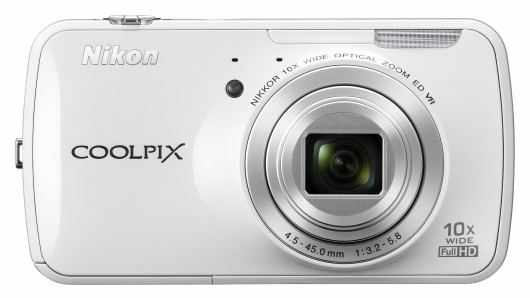Nikon Introduces Camera With Android OS: Is It A Game Changer?

About two months ago I wrote a little article called, “What DSLR Cameras Can Learn From Smartphones,” and at the time it seemed like nothing more than wishful thinking. Then last week Nikon took a logical first step by introducing a new camera touting the full Android 2.3 operating system (Gingerbread). The Nikon Coolpix S800c may be the first of its kind, but I guarantee it won’t be the last.
Looking over the camera reveals a modest set of specifications including a 16MP CMOS sensor, a 3.5 inch OLED touchscreen, and 1080p 30fps video capabilities. To me though, the more interesting aspects of this camera are the built in Wi-Fi, Bluetooth, and GPS. While it may not seem like that big of a deal, especially those of us using a smartphone, this was a smart decision by Nikon. Also with the ability to run full applications such as Instagram and Photoshop Touch, it can be argued that Nikon has a possible hit on its hands.
But let’s not get too ahead of ourselves. We still have a long way to go before I would consider this to be anything other than Nikon filling a growing niche. From a business standpoint it was an inevitability, but from the creative side, it’s quite a letdown. In my opinion, the best camera you can have is the one you have on you. In any normal case, this is my smartphone, and I can truthfully say that 99% of the time, I am more than content with this as my go to camera. I know I definitely don’t need another device so similar in my pocket.
Now I understand Nikon may not be catering this camera to me, but then who are they catering to? What this actually does now is further fragment the already crowed marketplace with just another point and shoot… now with Facebook. This is not going to be a popular camera for enthusiasts, and it certainly isn’t going to convince the average consumer to toss their smartphone, or for that matter, carry around two cameras with them. While the launch price is somewhat inciting ($349), it’s really nothing more than the Nikon Coolpix S6300 with Android tacked on.
I know I might be coming off as a little harsh, but why tease us with something as pointless as this? The compact camera market has seen market share drop over the years and is now stuck playing catch up to more innovative products. Stop beating around the bush and give us something we want, or even better, something we didn’t know we wanted. Unfortunately I can’t see this being any more than a typical Wal-Mart or Amazon impulse buy for uninformed customers. Yes, you can play Angry Birds on it. Awesome.
It’s not all bad though. I have to give Nikon props for a least trying something new, even if it is a baby step. The camera does contain two of the three things I suggested in my original article for a successful transition into the future of cameras, but I wouldn’t have thought they would waste their time going after an already crowded and dying market.
What we really need is at least a prosumer / mid-level DSLR style camera with those features and support for faster transfer speeds out of the camera. That’s not to say that Nikon doesn’t have a prototype sitting around in an R&D lab somewhere, but it’s getting exceedingly frustrating to see all these companies continue to squander innovation at our expense. It’s the independent filmmakers, the aspiring photographers, and the technologically savvy that they should be catering to. They are the most dedicated, the most informed, and generally the most loyal. However, if camera companies continue to ignore their most avid practitioners and decide that hitting a quota is going to advance their brand they are dead wrong.
With Photokina right around the corner, I wouldn’t be surprised to see more of these Android based compact cameras. It will be interesting to see what other companies can bring to the table. (I’m looking at you, Sony and Panasonic.)
What are a few of your favorite Android Camera Applications? Would you be interested in the Nikon Coolpix S800c?
Thanks to Planet5D for the original announcement. You can view their original post here.

